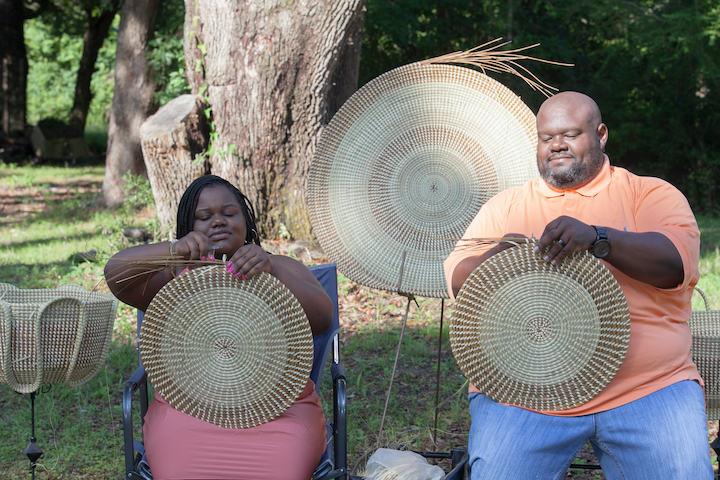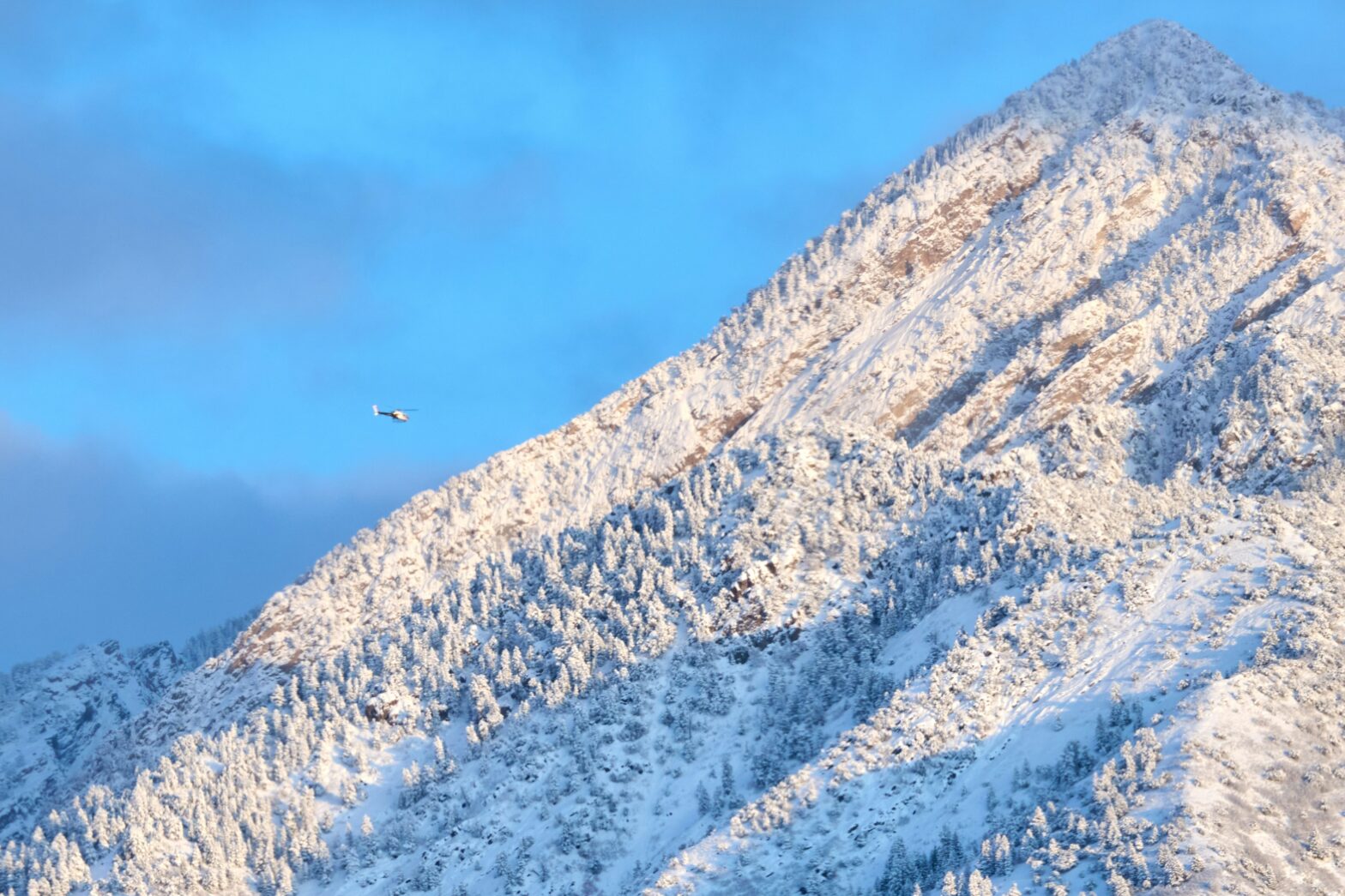Corey Alston is a proud 5th generation Gullah Geechee descendant. His family has firm roots planted in Mount Pleasant, South Carolina, a short drive from Charleston. While the rural town may often get overshadowed by its more talked about neighbor, Mount Pleasant has one thing that Charleston doesn’t— roughly 25 native Black families that are carrying on the tradition of sweetgrass basket weaving.
Something that is not found anywhere else in the nation.
Before one can understand the significant role that Corey and other Mount Pleasant Gullah Geechee natives play, you must first understand the sacred history of a tradition that has evolved from a skill for survival, to an art form that is now being preserved and protected.
Sweetgrass basket weaving, originated in West Africa
Sweetgrass basket weaving was a skill that developed centuries ago in mostly West African countries. Natives would create simple, multi-use baskets out of natural products on the land, to help clean and transport various crops as well as to act as a tool.
“Baskets were said to be woven on the West Coast of Africa over one thousand years ago,” Corey Alston explained. “Men were the original weavers because they were stronger and had a tighter pull and weave. They were originally a tool and not just used for cleaning.”
Once enslavers took natives from their land, the skill set transported with them.
One of the biggest crops harvested along the Gullah Geechee coast was rice. The land was too wet for others like cotton, so rice became “gold” for the area.
Once in America, Gullah Geechee women mostly took over as weavers. Enslaved women would weave baskets using sweetgrass— a grass that grows near marshy areas— along with other natural fibers like pine needle. The baskets were a simple circular design that allowed them to easily separate the husks from the rice grain with a sort of thrashing motion.
They called them, rice fanners.

The women would also use the baskets as a mat for their small children and babies to rest on, when they were not working.
Many of the women skilled in sweetgrass basket weaving ended up on one plantation in Mount Pleasant, thus leaving the skill to be something that can only be found in this town. Over the years, it was passed from mother to daughter, mother to daughter, as the men mostly did hard labor.
“If it wasn’t for the women, the art form would not have been kept alive. They showed their children how to weave, and it continues to be passed down. Different areas of the Gullah states are known for different skills, and we all recognize each for what they do. The skills are not outsourced, and we respect each other for what we are known for. We stay in our lane. Mount Pleasant happens to be recognized as the basket weavers.”
As Alston points out, the baskets were initially made for plantations but as Black people became more independent in the 40s and 50s, they began setting up roadside stands to sell the baskets. Sadly, white consumers who purchased the baskets would often shortchange the weavers for their work, paying as little as $.45 a basket, knowing the weavers were dependent on the income.
“I’ve heard stories of white farmers coming in to buy bushels of baskets. My wife’s grandmother would tell me how some families would see the farmers coming, and they knew it was a payday. They would put in days and weeks worth of work to only make $.45. You have to look at the non-respect for these artisans.”
Evolving from a skill to a craft, to art

Alston said the push to be respected and recognized has inspired the families to seek out their worth, and for later generations to keep the art alive with passion and love.
“Our grandparents paved the way. The hard times, the heat, the exhaustion— they paved the way for us today. I feel if we don’t keep it alive with passion, and love what we are doing, our ancestors did it for nothing. I also feel if we don’t keep it among us, we lose it to those that won’t respect it the way that we will. I’m very passionate about not teaching it out. If it’s not in the blood, you shouldn’t learn it.”
Alston’s hope is that others in the area will also recognize just how sacred sweetgrass basket weaving is, and they, too, will work to protect and preserve the tradition. After all, if you give away your art, you may lose it forever.
“Native Americans don’t teach the rain dance. They want you to come, enjoy it, and go back and talk about it after you patronize it. We, as natives, should be the same way.”
“I married into the family business with the blessing of my wife’s family, who have been doing this for 6 generations. My wife’s grandmother, Ms. Mary Jane Manigault, was a well-known artisan and heritage award winner. She green lighted me in. I was easily accepted because I was true blood of the community, our neighborhood just wasn’t originally basket weavers but more known as brick masons. Now, I am looking to carry that on in my children while also protecting our heritage.”

Alston is also shifting the narrative on how people view sweetgrass weaving. Rather than calling it a craft, he is intentional on calling it an art form and calling himself an artisan. As he continues to do so, others in turn begin to use that same language of calling him an artisan and respecting the tradition as an art.
He even goes as far as being intentional with the images he portrays on social media and even in-person at the local market where he often sets up to sell his pieces. Whereas older generations played up the narrative of looking ‘rundown and needy’ to entice people to buy with them, Alston is working to change this.
“My wife’s grandmother said to me, ‘Corey, I look at your work. My generation and those before me, had a skill. How to make the basket, harvest and collect. My daughter (my mother-in-law) had a craft, they did a little bit better. But your generation has turned it into an art. You have taken a skill, and passed the craft side.’ We’re now being noticed in galleries and museums. You’re not a skill or craft at a museum, you’re an artist. So as long as we continue to use that language the people who support our work, will also recognize it as such.”
Preserving the Gullah Geechee tradition

Now, as he continues to build the family business, drawing in customers from all over the country, he is looking ahead to passing the art form to his two daughters. As they see how protective he is over the preserving the culture, he is assured that they too, will do the same.
“If you can’t YouTube how to make a sweetgrass basket, it is hidden for a reason. This should be kept among ourselves. There is respect we are giving our ancestry by not allowing this out. You will never see me recording videos of myself working. We are keeping Gullah Geechee heritage alive 100%. I’d rather the art form die out, instead of a company later coming and monopolizing and capitalizing off of it.”
This interview has been condensed for brevity
You can check out more of Corey’s work on his Instagram page: @corey_alston_sweetgrassbasket.





